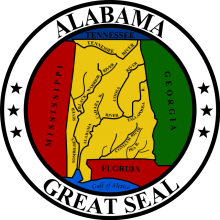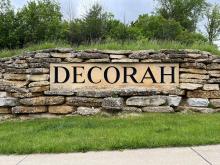
At the end of August, Alabama rolled out what has been a unique state-level response to the ongoing Covid-19 pandemic and a decision by every school district to offer remote learning as an option for the current school year. Using $103 million in CARES Act funding, the governor’s office enacted the Broadband Connectivity for Students initiative to help low-income families pay for existing or connect new service via a voucher program that runs through December 31st of this year and is worth, on average, about $400 per family.
To date almost 60,000 vouchers have been redeemed representing more than 100,000 students, and while we would wish to see such a large pot of funds go instead towards permanent connectivity solutions, for thousands of families it’s meant immediate and necessary relief. It also highlights the ongoing importance of fast, reliable, affordable Internet-access for distance learning.
The process began in late July, with the state issuing a Request for Proposals (RFP) [pdf] soliciting responses as many Internet Service Providers (ISPs) as wanted to participate in the program. The Alabama Department of Economic and Community Affairs is heading it up, with the state's Department of Education providing the identifying information for households with students on free or reduced lunch. CTC Technology and Energy is serving as contractor (and receiving approximately $3.4 million for its design work and services).
37 Internet Service Providers (ISPs) across fiber, fixed wireless, mobile, cable, and satellite service ultimately made the cut to participate in the program. See the full list of ISPs, but it includes a handful of municipal networks and cooperatives we’ve covered in the past, including:
- Central Alabama Electric Cooperative
- Mon-Cre Telephone Cooperative
- New Hope Telephone Cooperative
- North Alabama Electric Cooperative
- The Electric Power Board of the City of Scottsboro, Alabama
It remains unclear whether the program restricts participating providers based on speed, reliability, or data caps, or are monitoring it to make sure that students can stream video lectures and access content in a usable way. None of the documentation explicitly outlines minimum speeds or data caps, which could be a problem, and one which has been noted in other communities where students have received hotspots to complete their schoolwork. For instance, ViaSat, one of the participating providers, offers service tiers for the Abbeville area, for instance, where three out of four options ($50/75/100 per month) for families top out at 12 Mbps (Megabits per second) and restrict users to monthly data caps of 12, 25, and 50 gigabytes. It’s possible the program has suspended these caps for satellite service providers like ViaSat, but there’s no evidence this is the case (see update below).
Maureen Neighbors, the chief of ADECA’s Energy Division, said of the program that it’s "unique in that we are statewide, and we are doing it with numerous providers. So this has allowed us to really increase our reach and and hit parts of the state that we might not otherwise been able to provide service to."
The first round of vouchers went out to 250,000 households starting at the end of August and 44,000 were redeemed, representing 75,000 students. To improve participation rates, a second round went out with updated addresses, totaling 300,000, starting October 1st. By October 13th, 58,000 households had redeemed their vouchers. There’s no word yet on whether a third round will go out.
Any funds not spent as part of the Broadband Connectivity for Students program will be returned at the end of the year. Those families who have received support to make new connections will need to find a way to pay for them moving ahead.
It is nice to see that federal funds funneled into the state recently won’t solely be used for temporary support. Recently, the USDA's ReConnect program announced $37 million in grant and loan awards to ISPs in Alabama which will include funding Fiber-to-the-Home (FTTH) networks built by two community-owned broadband providers from the list above. Central Alabama Electric Cooperative got $8.6 million to connect 13,853 people, 149 farms, 77 businesses in Bibb, Chilton, Perry, Autauga, Talladega, Elmore and Coosa counties. Mon-Cre got $5.8 million to connect 2,546 people, 36 farms, 19 businesses and three fire stations internet in Crenshaw, Lowndes and Montgomery counties in Alabama. In addition, since 2018 the state has maanged a broadband grant program which to date has disbursed $2.3 million and which has been matched by $9.4 million in private funds to connect more than 3,000 premises.
Families can check their eligibility and receive voucher by calling 888-212-4998, and visit the program's website for further information.
Update: CTC Technology and Energy provided an update that more than 115,00 students have been connected so far. They also shared the program RFI which shows that minimum requirements for participating ISPs include a 25/3 Mbps connection, latency of less than 150 milliseconds for non-satellite networks, and the removal of data caps (though connections could be throttled after 25GB/month).







